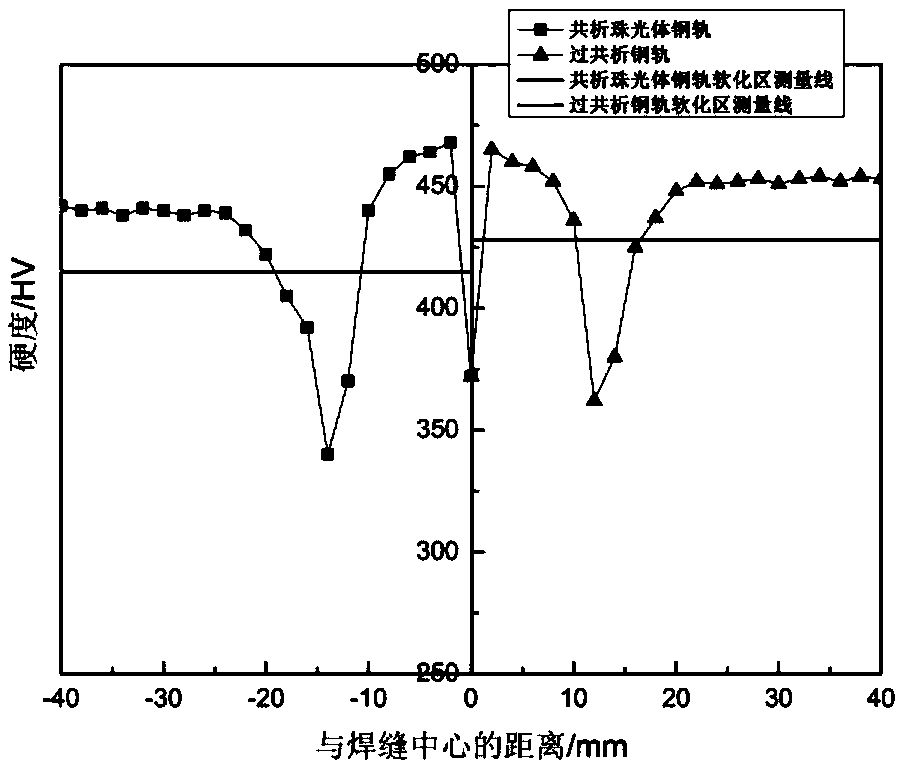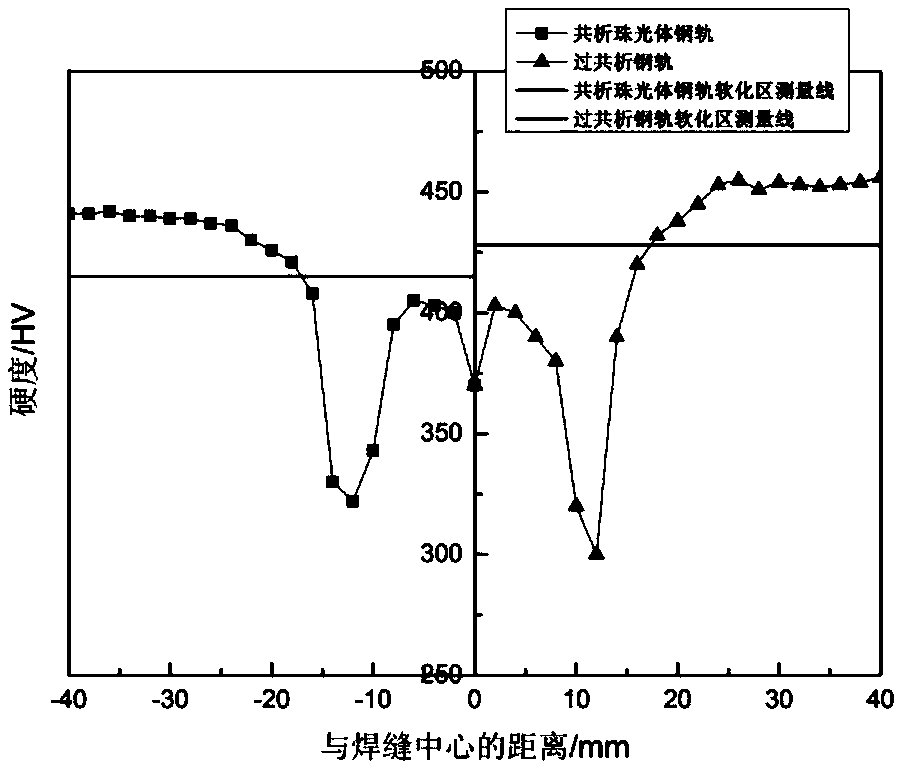Post-weld heat treatment method for steel rails
A technology for post-weld heat treatment and steel rails, applied in heat treatment furnaces, heat treatment equipment, furnaces, etc., can solve problems such as high cost and complicated operation, and achieve the effects of low equipment requirements, simple implementation process, and good application prospects
- Summary
- Abstract
- Description
- Claims
- Application Information
AI Technical Summary
Problems solved by technology
Method used
Image
Examples
Embodiment 1
[0041] After the hypereutectoid steel rail and eutectoid pearlitic steel rail with a specification of 75kg / m are upset and pushed during the moving flash welding process, post-weld heat treatment is performed on the welded joint. Firstly, the rail joint with residual temperature of 1100 °C obtained by welding is cooled in the first stage at the first cooling rate of 4.9 °C / s to reduce the surface temperature of the rail head of the rail joint to 630 °C, and then the rail joint is cooled at 2.0 °C The second cooling rate of / s is used for the second-stage cooling to reduce the surface temperature of the rail head of the rail joint to 220°C, and finally the rail joint is subjected to the third-stage cooling at a third cooling rate of 0.4°C / s to reduce the temperature of the rail joint The temperature of the surface layer of the rail head is lowered to the room temperature of 25° C., thereby obtaining the welded joint of the rail with post-weld heat treatment of the present invent...
Embodiment 2
[0049] After the hypereutectoid steel rail and eutectoid pearlitic steel rail with a specification of 60kg / m are upset and pushed during the moving flash welding process, post-weld heat treatment is performed on the welded joint. Firstly, the rail joint with residual temperature of 1000 °C obtained by welding is cooled in the first stage at the first cooling rate of 4.2 °C / s to reduce the surface temperature of the rail head of the rail joint to 620 °C, and then the rail joint is cooled at 2.3 °C The second cooling rate of / s is used for the second-stage cooling to reduce the surface temperature of the rail head of the rail joint to 185°C, and finally the rail joint is subjected to the third-stage cooling at a third cooling rate of 0.10°C / s to reduce the temperature of the rail joint The temperature of the surface layer of the rail head is lowered to room temperature of 25° C., thereby obtaining the post-weld heat-treated rail welded joint of dissimilar materials of the present...
PUM
| Property | Measurement | Unit |
|---|---|---|
| Softening zone width | aaaaa | aaaaa |
| Width | aaaaa | aaaaa |
| Softening zone width | aaaaa | aaaaa |
Abstract
Description
Claims
Application Information
 Login to View More
Login to View More - R&D Engineer
- R&D Manager
- IP Professional
- Industry Leading Data Capabilities
- Powerful AI technology
- Patent DNA Extraction
Browse by: Latest US Patents, China's latest patents, Technical Efficacy Thesaurus, Application Domain, Technology Topic, Popular Technical Reports.
© 2024 PatSnap. All rights reserved.Legal|Privacy policy|Modern Slavery Act Transparency Statement|Sitemap|About US| Contact US: help@patsnap.com










